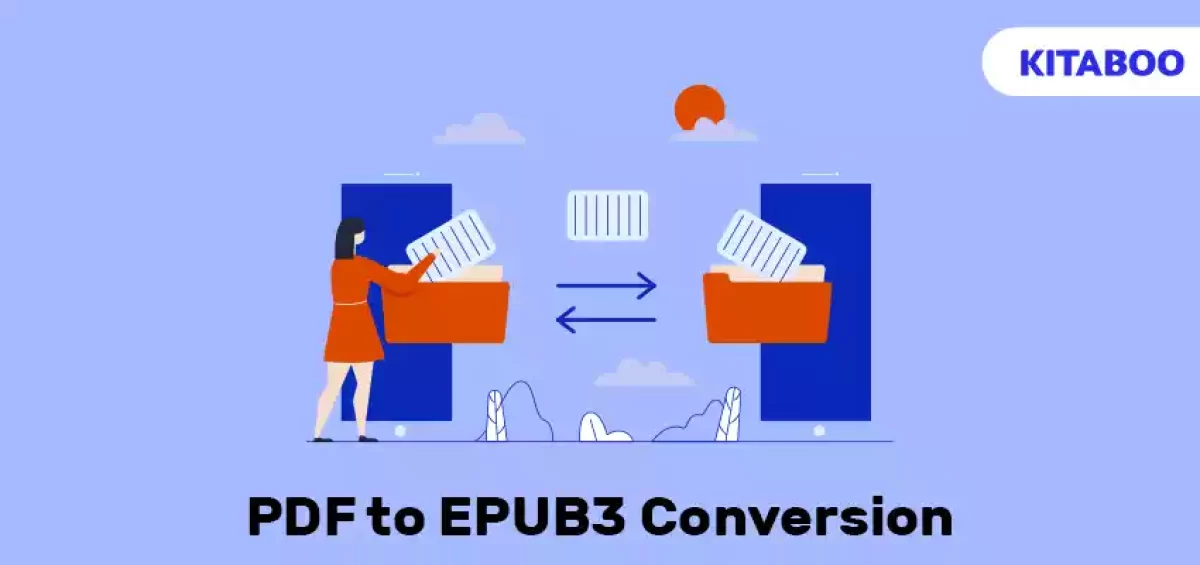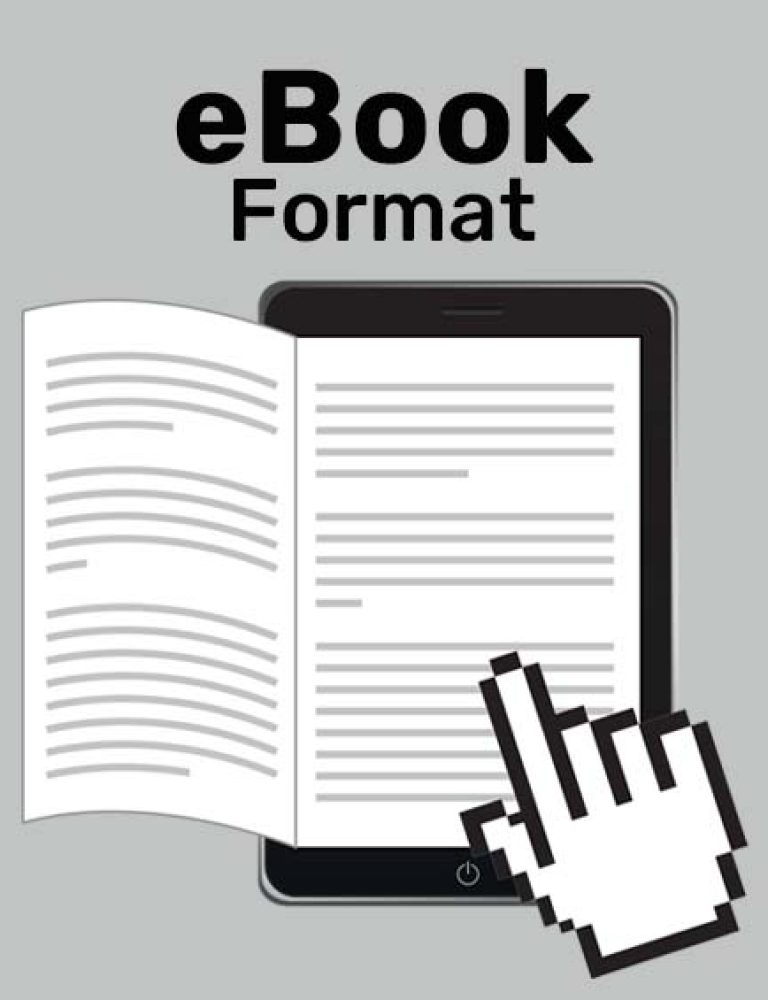By the year 2024, the global market of eBooks is estimated to be valued at a stagerring 14.61 billion dollars. As such, digital publishers have been on a constant lookout for alternatives to PDF documents.
PDF documents aren’t as sought after as they used to be, largely due to the following limitations:
- PDF documents are not supported for converting digital content into a reflowable layout
- They are not supportive of formats, such as XML and XHTML
This is where ePub3 conversion tools come into play. They enable digital publishers to optimize ePub3 formatting as per required preferences. Along those lines, KITABOO’s cutting-edge ePub3 tool has revolutionized the eBook publications industry.
Let’s understand a bit more about the PDF to ePub3 conversion automation tools and their limitless benefits.
Table of Contents
I. What is PDF to ePub3 Conversion Automation?
II. The Four Benefits of PDF to ePub3 Conversion Automation
- Supports Reflowable Layout
- Supports Fixed Layout
- Compatible with Diverse Software Solutions
- Conversion in Various Formats
III. How to Perform PDF to ePub3 Conversion Automation?
- Select the Right ePub3 Conversion Tool
- Focus on the Formatting of the PDF Document
- Import Your PDF Document
- Revise Your Converted ePub3 Document
- Publish Your ePub3 Document
IV. The Takeaway
What is PDF to ePub3 Conversion Automation?
Of late, readers have started showing a preference for eBooks over physical copies due to their cost-effective and easy-to-access nature. As per a reliable statistical data source, by the year 2027, the number of readers in the eBooks market is estimated to touch 1.1 billion.
Hence, it is vital to use a digital platform that can offer interactive content to publishers that they can sell to grow and earn more. As such, ePub3 has risen as a one-of-a-kind digital platform that has proved itself to be a game changer.
In stark contrast to the PDF’s fixed layout, ePub3 can offer a reflowable layout. This means that readers will now be able to read the text without zooming in and out, even on the smallest of devices with ease.
The Four Benefits of PDF to ePub3 Conversion Automation
Let’s look at how PDF to ePub3 conversion automation enables eBook publishers to enhance readability and interactivity:
1. Supports Reflowable Layout
Contrary to the PDF, the significant benefit of using ePub3 conversion is its reflowable layout as a rendition. This type of format makes it a preferred pick over PDF documents because PDF lacks such a feature. eBook publishers can now avail the following benefits by using the reflowable layout feature:
- It makes eBooks a fit for all devices
- The flow of the content adjusts according to the device’s screen
- It’s best suited for autobiographies and novels
- Customizable reading options are available for readers
- Font, size, and margins can be personalized
2. Supports Fixed Layout
Similar to PDF documents, ePub3’s use of HTML allows eBook publishers the fixed layout ePub format for their eBooks. This is vital, as the format cannot be replaced with a reflowable layout if the eBook contains pictures or images. The benefit of using fixed layout ePub is that it gives publishers an electronic copy of the original document devoid of any changes.
As a result, readers can zoom in and out to view the specific details of the visual elements or pictures. That said, it does not alter the flow of text and page numbering.
Publishers should choose a fixed layout if the eBook is full of illustrations and pictures rather than a reflowable layout. Otherwise, it will be problematic to view images or illustrations on devices with smaller screens.
3. Compatible with Diverse Software Solutions
Another low-key benefit of ePub3 formatting is that it is compatible with quite a few software solutions. As you may already know by now, PDF documents have a limited scope, as they do not follow XML and XHTML formats. Conversely, ePub3 follows XML and XHTML formats in their drafting.
This means that ePub3 is compatible with almost every device. And those that use XML formats can transfer data into the ePub3 formatting without much hassle.
4. Conversion in Various Formats
Many organizations have been using diverse formats when streamlining their business functioning. And as such, ePub3 conversion consists of a plethora of tools that enable it to convert files into various formats.
Moreover, it is very easy to run PDF to ePub3 conversion through KITABOO. The platform is tried and tested when it comes to delivering the best results to digital publishers and/or organizations.
How to Perform PDF to ePub3 Conversion Automation
Now, we’ll walk through a set of steps to learn how to process ePub3 conversion:
Step 1: Select the Right EPUB3 Conversion Tool
Various tools are available when it comes to converting PDF into ePub3 formatting, like BookIT, Adobe InDesign, and KITABOO. You should carry out extensive research to find out which one is the best ePub3 conversion platform, as per your needs and budget range.
You can rely on the effectiveness and credibility of the KITABOO platform as it is known to deliver the best results when it comes to digital publishing.
Step 2: Focus on the Formatting of the PDF Document
Before carrying out a fixed layout ePub or reflowable layout, you should make sure it has the right formatting. Make sure that the content you are going to format is fully structured and formatted correctly.
Additionally, you should revisit your content to check the headings, subheadings, images, or illustrations. This will allow you to save time and energy as you will be able to rectify errors in the content preemptively.
Step 3: Import Your PDF Content
Once you select the tool you will use for converting the PDF document, you should import your file to it. Here, you will get the option to select the layout. You can either choose a fixed layout or a reflowable layout as per your text’s requirement.
Note: If you choose the reflowable layout, you will get the option to customize the fonts. Hence, you should try to choose readable fonts that do not overlap on any device. Your priority should be the convenience of the readers.
Step 4: Edit Your Converted EPUB3 Document
Before you publish and share your converted ePub3 document, it is vital to revisit the content. This will help you correct the structure and formatting of the content wherever necessary. Moreover, in case there are any grammatical mistakes, spelling errors, etc., you will be able to edit and rectify the document in no time.
Step 5: Publish Your EPUB3 Document
After making sure the converted document is error-free, the last step that you need to perform is publishing it on KITABOO and any other digital platforms such as Amazon Kindle or Google Play Books.
The Takeaway
Access to high-quality eBook content is vital to gaining a competitive edge. Hence, PDF to ePub3 conversion automation is not optional but rather an essential option. It will offer publishers options for reflowable layout and fixed layout that they can opt for as their content requirements.
KITABOO has emerged as one of the best ePub3 formatting platforms that has changed the reading experience of readers. They can customize their font sizes and margins to elevate the experience. As a result, this will prove itself as a lucrative option for publishers, aiding them in enhancing their revenue and earning a competitive advantage.
To know more, write to us at KITABOO@hurix.com.
Discover How An Ebook Conversion, Publishing & Distribution Platform Can Help You
Kitaboo is a cloud-based content platform to create-publish & securely distribute interactive mobile-ready ebooks.
You May Also Like









